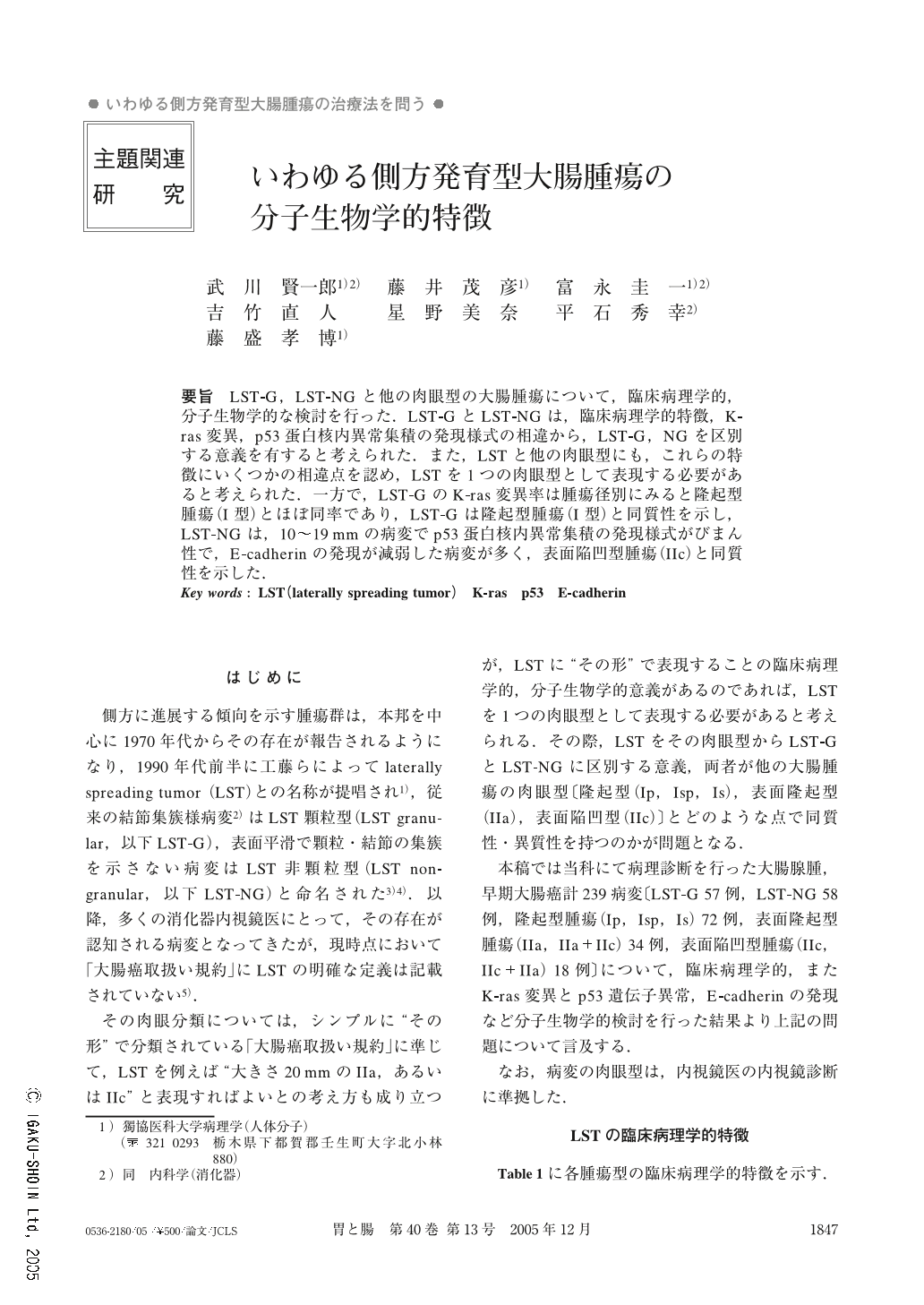Japanese
English
- 有料閲覧
- Abstract 文献概要
- 1ページ目 Look Inside
- 参考文献 Reference
- サイト内被引用 Cited by
要旨
LST-G,LST-NGと他の肉眼型の大腸腫瘍について,臨床病理学的,分子生物学的な検討を行った.LST-GとLST-NGは,臨床病理学的特徴,K-ras変異,p53蛋白核内異常集積の発現様式の相違から,LST-G,NGを区別する意義を有すると考えられた.また,LSTと他の肉眼型にも,これらの特徴にいくつかの相違点を認め,LSTを1つの肉眼型として表現する必要があると考えられた.一方で,LST-GのK-ras変異率は腫瘍径別にみると隆起型腫瘍(I型)とほぼ同率であり,LST-Gは隆起型腫瘍(I型)と同質性を示し,LST-NGは,10~19mmの病変でp53蛋白核内異常集積の発現様式がびまん性で,E-cadherinの発現が減弱した病変が多く,表面陥凹型腫瘍(IIc)と同質性を示した.
The “laterally spreading tumor (LST)” have been known as a lesion larger than 10 mm in diameter and extending circumferentially rather than vertically and they are classified into two subtypes : granular (LST-G) and non granular (LST-NG). However, they are not defined definitely at present.
We analyzed the clinicopathological and molecular biological features of LSTs compared with other macroscopic types of colorectal tumor (protruded type I, superficial elevated type IIa and IIa+IIc, depressed type IIc and IIc+IIa).
These results suggested that LSTs should be classified as an independent disease entity. In our study, LST-G is similar to protruded type tumor and one part of LST-NG is similar to depressed type tumor, however, the other part of LST-NG is similar to protruded type tumor.

Copyright © 2005, Igaku-Shoin Ltd. All rights reserved.


